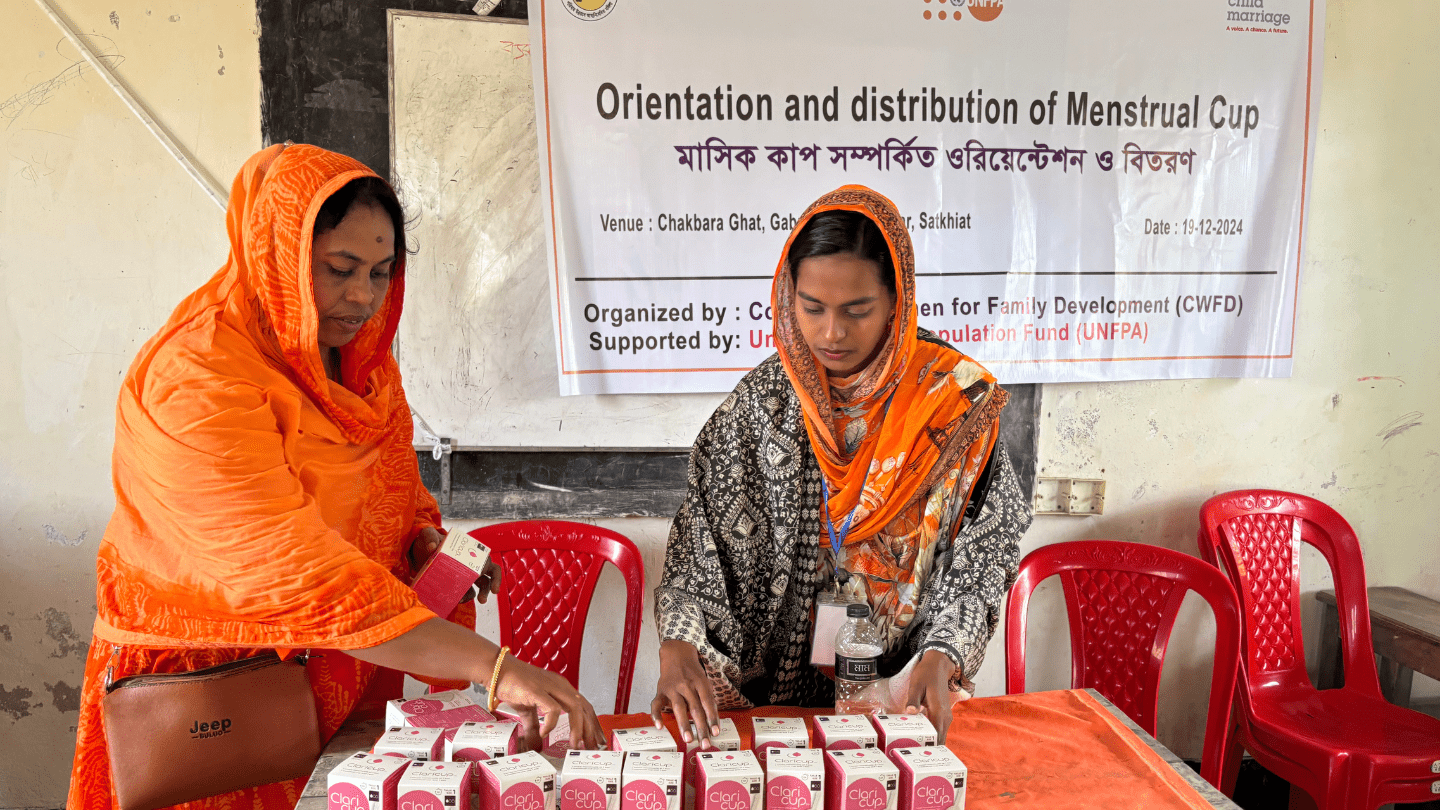In Gabura Union of Shyamnagar in Satkhira district, where the land still bears the scars of each passing cyclone and freshwater is increasingly scarce, menstruation is not just a monthly occurrence—it’s a recurring struggle. With seawater infiltrating ponds and wells, the most basic aspects of menstrual hygiene become daunting. For women and girls in this area, limited access to clean water, inadequate sanitation, and unavailability of sanitary products turn a natural process into a source of stress and health risk.
For 18-year-old Khairunnesa, every period used to bring discomfort and fear of infection. “We only had salty water to wash with. I used old cloths. It gave me rashes,” she says, seated outside the modest home she shares with her in-laws and young child.
Khairunnesa’s experience is not unusual. Across Bangladesh, over 64% of women and 50% of adolescent girls still rely on old cloths during menstruation. These cloths are often hidden away to dry, under beds, behind doors, or inside wardrobes, because of persistent shame and social stigma. In fact, 55% to 67% of women and girls hide them when drying, risking bacterial infections due to poor ventilation and hygiene.
In December 2024, after Cyclone Remal once again battered the coastal delta, Khairunnesa joined a group of women and girls attending a UNFPA-supported orientation session on menstrual cups. She had never seen a menstrual cup before. “I had never seen one before,” she says. “I was nervous at first. But the trainer explained everything, how to use it, how to clean it. She said it was safe.”
Khairunnesa gave it a try—and never looked back. “Once I tried it, I was relieved to find it far more comfortable and convenient than I had imagined,” she says. “I was genuinely pleased with how practical and effective it was in meeting my needs,” she adds with a quiet smile.
The menstrual cup, a small, reusable device made of medical-grade silicone, offers protection for hours, even in settings with limited access to clean water. It can last a decade with proper care. Each cup replaces hundreds of disposable products over its lifetime. For women living in disaster-prone, supply-disrupted areas, it is a game-changer: reliable, affordable, discreet, and environmentally sustainable.
For a young mother trying to manage household costs, the cup’s durability and reusability were life-changing. We can save money now, no more buying pads every month. Instead, I just clean and reuse it by boiling in water,' she says. 'And I don’t have to worry if there’s a flood or the market is closed.'
Just a few homes away, 19-year-old Bipasha had her own hesitations. Her mother-in-law was worried the cup was unsafe. But Bipasha, who also attended the session, sat down with her and explained everything she had learned. “She listened,” she says. “Now, she helps me boil it to clean it.”
Like Khairunnesa, Bipasha says the cup has lifted a weight. “My husband works in Dhaka, and getting pads was always hard as he needed to send money to buy them. Now, with less cost, with this cup I can manage without worries.”
UNFPA’s menstrual cup pilot, launched with the support of an implementing partner, Concerned Women for Family Development (CWFD), in flood- and cyclone-prone areas, is addressing period poverty at its roots, at the intersection of climate resilience, gender equity, and public health. The approach goes beyond distribution. UNFPA Implementing partner CWFD field level staff and community youth volunteers run hands-on sessions, providing adolescent girls with the information on how to use, clean, and care for the cups safely, even with limited water, and also create space for open discussion about menstruation in communities. .
“We don’t just hand out cups and leave,” says one trainer in Shyamnagar. “We talk about their rights, hygiene, comfort. We include husbands and mothers-in-law, and other family members in the community conversation to raise awareness.”
From an environmental perspective, the solution is equally powerful. In an area where used disposable pads often end up in waterways or landfills, menstrual cups offer a zero-waste solution that protects both women and the fragile ecosystems they depend on.
Though still a pilot, this UNFPA initiative is already making waves. Its potential is clear: scalable to disaster-prone, and hard-to-reach including the crisis response areas in Bangladesh. To scale it up further, the National Technical Committee (NTC) of the Directorate General of Family Planning (DGFP) has agreed to launch this intervention at the national level and implement it in the disaster prone areas communities. With sustainable investment, it has the potential to serve as a national model for climate-resilient menstrual health initiatives.
For Khairunnesa and Bipasha, the change is deeply personal, but its ripple effects are wide. “I feel in control of my body now,” says Khairunnesa. “I wish every girl had this chance.”
In the face of rising seas and recurring storms, a humble silicone cup is delivering something revolutionary: not just protection from leaks, but a way out of silence, shame, and exclusion. With continued support, this pilot can grow, reaching every girl and woman still waiting for a safe, sustainable solution.


